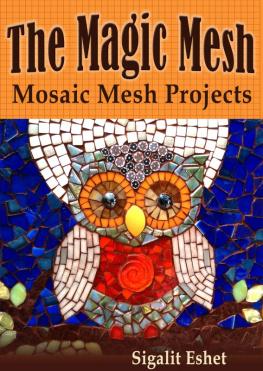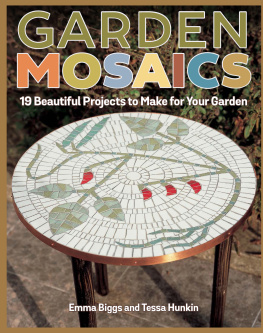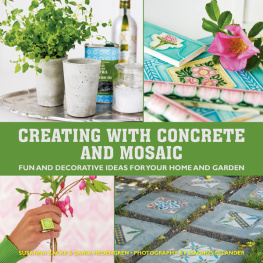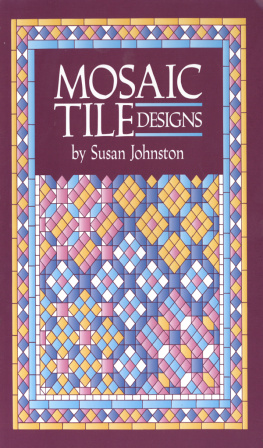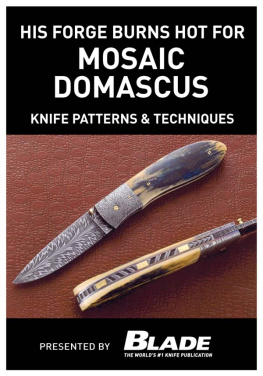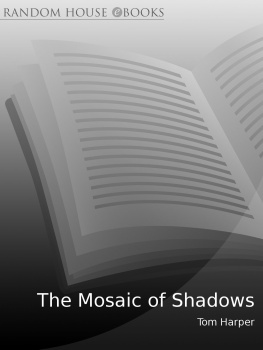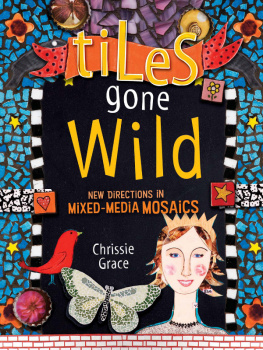Table of Contents
MOSAIC RENAISSANCE. Copyright 2009 by Laurel Skye. Manufactured in China. All rights reserved. The patterns and drawings in the book are for personal use of reader. By permission of the author and publisher, they may be either hand-traced or photocopied to make single copies, but under no circumstances may they be resold or republished. It is permissible for the purchaser to make the projects contained herein and sell them at fairs, bazaars and craft shows. No other part of this book may be reproduced in any form or by any electronic or mechanical means including information storage and retrieval systems without permission in writing from the publisher, except by a reviewer, who may quote a brief passage in review. Published by North Light Books, an imprint of F+W Media, Inc., 4700 East Galbraith Road, Cincinnati, Ohio 45236. (800) 289-0963. First edition.
13 12 11 10 09 5 4 3 2 1
Distributed in Canada by Fraser Direct
100 Armstrong Avenue
Georgetown, ON, Canada L7G 5S4
Tel: (905) 877-4411
Distributed in the U.K. and Europe by David & Charles
Brunel House, Newton Abbot, Devon, TQ12 4PU , England
Tel: (+44) 1626 323200, Fax: (+44) 1626 323319
E-mail: postmaster@davidandcharles.co.uk
Distributed in Australia by Capricorn Link
P.O. Box 704, S. Windsor, NSW 2756 Australia
Tel: (02) 4577-3555
Library of Congress Cataloging-in-Publication Data
Skye, Laurel.
Mosaic renaissance / Laurel Skye. -- 1st ed. p. cm.
Includes bibliographical references and index.
ISBN 978-1-60061-198-8 (pbk. : alk. paper)
1. Mosaics--Technique. 2. Handicraft. I. Title.
TT910.S57 2009
738.5--dc22
2009014089
Editor: Kristin Boys
Designer: Steven Peters
Production Coordinator: Greg Nock
Photographers: Adam Hand, Ric Deliantoni,
Christine Polomsky
Photo Stylist: Jan Nickum
METRIC CONVERSION CHART
Dedication
To Brian Sproul, a visionary artist whom few knew. For twenty-five years, he created art unceasingly from his wheelchair and through his pain. He died unknown. And Robert, eighty-six, an ex-marine, alcoholic widower, who turned his house and yards into a mosaic wonderland and grotto, only to see it vandalized again and again by neighborhood kids. He is an unsung hero. To all those brilliant visionaries who are broken and damaged and still create out of their fractured realms. I applaud you for not quitting and for your courage to continue to make art.
Acknowledgments
The Quantum Physics of Writing a Book
Nothing exists inherently on its own. Everything is interconnected to everything else. Example: a tree. A tree would not exist if not for three factors:
1. The connection to its whole and its parts (roots, trunk, branches, leaves)
2. Its relation to its environment (earth, rain, air, wind, sun)
3. How it is observed (the viewers perception of it)
So how does this book exist?
The Whole and Its Parts: My vision (the roots), talking about it and endless rewriting (the truck), connecting with Tonia Davenport, Kristin Boys, Christine Polomsky and all the good people at North Light Books (the limbs and the leaves), and their ability to act on what was just an idea.
The Environment: My extended family and friends with their tireless support. To Zo Devine, my Italian friends Julia and Daniela for when I was lost in translation. To my sons, whom I adore: Serge (who taught me computer skills) and Jesh (who taught me courage). And especially to my daughter, Kiah who helped to write and create this mosaic book with me. Lastly, to my ex-husband, Dov, for had he not left me, this mosaic journey and this book would never have happened.
The Observer: You! The reader that observes this effort in your own unique way and then takes the mosaic ball and runs with it.
So I acknowledge the beautifully orchestrated universal workings that we are all a part of, that made this book and all creative journeys possible.
Introduction: Reinventing Shangri-la
It all started in 1955 when I was nine years old. I was glued to the black-and-white television screen. There was Charlie Chan in Paris, with its sensual Parisian Apache dance, the lavishness of Brazilian bombshell Carmen Miranda, with all the seductive exoticism of South America, Mr. Moto in Shanghai and James Hiltons idea of Shangri-la in the 1937 movie, Lost Horizons . I was hooked on the exotic turbaned fortune-tellers, carnivals and sances. I wanted to conjure a phantasmagorical worldspiritual, beyond reality, elaborate and mysterious, mystical, magical, oriental and flamboyant.
At fourteen, I ran away to join the circus. No, not really. But I did move to Hollywood and sang in coffee houses. I wanted to be a set designer, write music and make costumes. A seed in my childhood had been planted, which would keep alive the lure of mysterious, faraway places like Tibets gilded temples and monasteries, embroidered silks, yak butter tea, rich intricate paintings, and ornate Mongolian carvings.
So, how did I work all that into a nine-to-five job? Well, I didnt. Instead I hung out with West African musicians and made music. I also made clothes, hats, jewelry, greeting cards, calendars, leather belts and bags. I even made chopsticks and crochet needles. I traveled, slept on the side of the road, ate ceremonial peyote with Native elders in New Mexico, lived in communes, hung out with people as diverse as Frank Zappa and Charles Bukowski. I opened a small restaurant and juiced exotic drinks and elixirs and served dishes as foreign as forbidden rice. I knitted, crocheted, sewed, raised goats, spun yarn and made cheese. And, oh yes, I tiled things.
One thing led to another and the next thing I knew, I turned fifty. There I was, three marriages and four children later. With fifty, came caring for my aging mother, who died blissfully in my arms. A twenty-two year marriage culminated in separation. With divorce came a lack of money. And with turning fifty, there came raging hormones, depression and hot flashes. And my dog died. That year I thought I would die, too.
That was the year I had to choose to throw in the towel or get back on the train. I got back on. I picked up tiling again. It saved me. I traveled, I studied, I grew, and day after day I didnt die. It was during this period that I decided to go to Italy and study mosaics from the masters. While in Ravenna, I explored, in awe, the Basilica of St. Vitale with a group of like-minded mosaicists. But, always the loner, I found myself turning left when everyone else was turning right, splintering off from the group. It was in my meandering that I stumbled across what was to be the next chapter in my lifes journey: the work of Dusciana Bravura and her father, Marco. I was mesmerized. Dusciana had taken millefiori slices and used them as tiles. Never before had I seen any mosaics like it. I had an epiphany, if you will. From that day on, I knew what I wanted to do.


